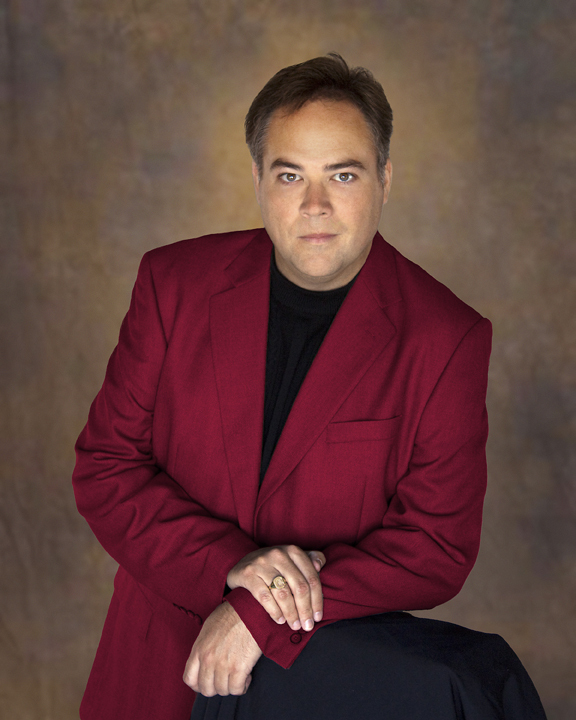It makes sense that Mark Griffin turned out to be a film writer.
Growing up in Lewiston, Griffin often stayed up late to watch old movies, and became fascinated by the grand Hollywood musicals of the 1940s and ’50s. But while other kids might have just fixated on the stars – Fred Astaire, Judy Garland, Gene Kelly – Griffin became fascinated with director Vincente Minnelli.
Minnelli directed classic musicals such as best picture Oscar winners “An American in Paris” (1951) and “Gigi” (1958), and dramas including “The Bad and the Beautiful” (1952) and “Lust for Life” (1956), both starring Kirk Douglas.
Griffin continued to be fascinated with Minnelli as he grew up and wrote about contemporary film. He finally got his chance to really delve into the director’s life and career by writing a book, “A Hundred or More Hidden Things: The Life and Films of Vincente Minnelli” (Da Capo Press, $15.95).
The book, released March 1, follows Minnelli’s long career and explores his marriage to Judy Garland and his relationship to daughter Liza Minnelli. Vincente Minnelli died in 1986.
Griffin interviewed more than 100 people for the book, including Kirk Douglas, Angela Lansbury, Tony Curtis and Lauren Bacall. It was picked as book of the month for April by the Turner Classic Movies cable channel.
Griffin’s writings, including film reviews and essays, have appeared in the Boston Globe, MovieMaker magazine, Genre and other publications.
Q: How did you pick Vincente Minnelli to write about?
A: It’s always been a magnificent obsession of mine, old movies, since I was a young child. The local PBS station must have owned a collection of MGM musicals, and I began to realize many were directed by one guy, Vincente Minnelli. I wondered, who was the individual behind all this? I wanted to know as much about him and the making of the films as well.
I read his autobiography. It was diplomatic and polite, and I got the feeling large parts of the story were not being shared. That made me all the more curious.
At some point (while working as a writer), a magazine editor asked me what my dream project would be, and I said to write a full-length biography of Minnelli, and to see how the films mirrored his life. That editor helped me get started.
Q: What are some of the films that tell us something about Minnelli?
A: “The Pirate” (1948) is a very lavish musical with a Cole Porter score, starring Gene Kelly and Judy Garland. It’s become sort of a cult favorite, because it’s a wild film with spectacular visuals. But like many Minnelli films, it has this notion of identity, pretending to be someone else. His film “On a Clear Day You Can See Forever” (1970) with Barbra Streisand is also like that. It was a theme important to Minnelli as you look at his life, questions about his sexuality, the rumors that he was gay, his marriage to Judy Garland.
The phrase “a hundred or more hidden things” is a direct quote from Minnelli, talking about all the subliminal things that go into a movie, but it could also be referring to his personal life.
Q: Where did you find all your information?
A: I did 124 interviews, with stars who worked with him, but also people who knew him and his family back in Delaware, Ohio, where he was from. Some people had been saving up (things about Minnelli) for 70 years and were dying to tell someone. That’s where I heard about how he was tormented for his effeminacy on the playground, about his uncle’s suicide.
Q: What did you learn about his marriage to Garland?
A: They were both working at MGM. Minnelli was this urbane and sophisticated director, and Garland was the studio’s brightest star. It was a very unconventional relationship. Some people speculated it was something the studio manufactured, but I found no evidence of that. They were two wildly talented and sensitive people who were maybe a little lost in the MGM glamour factory, and might have reached out to each other as a lifeline.
Judy brought out the best in him as a director. They married in 1945 and divorced in 1951. Around that time he directed her in five films, including “Meet Me in St. Louis” (1944), “Ziegfeld Follies” (1945) and “The Pirate.”
Q: What is his legacy as a director?
A: He was ranked the 20th greatest film director by Entertainment Weekly, and some of his films show up on lists of the 100 greatest films. “An American in Paris” won best picture, and “Gigi” won best picture and best director.
But he did a lot of dramas and lots of cutting-edge things. In 1943 he made “Cabin in the Sky,” a surrealist musical with an all-black cast.
Staff Writer Ray Routhier can be contacted at 791-6454 or at:
rrouthier@pressherald.com
Send questions/comments to the editors.




